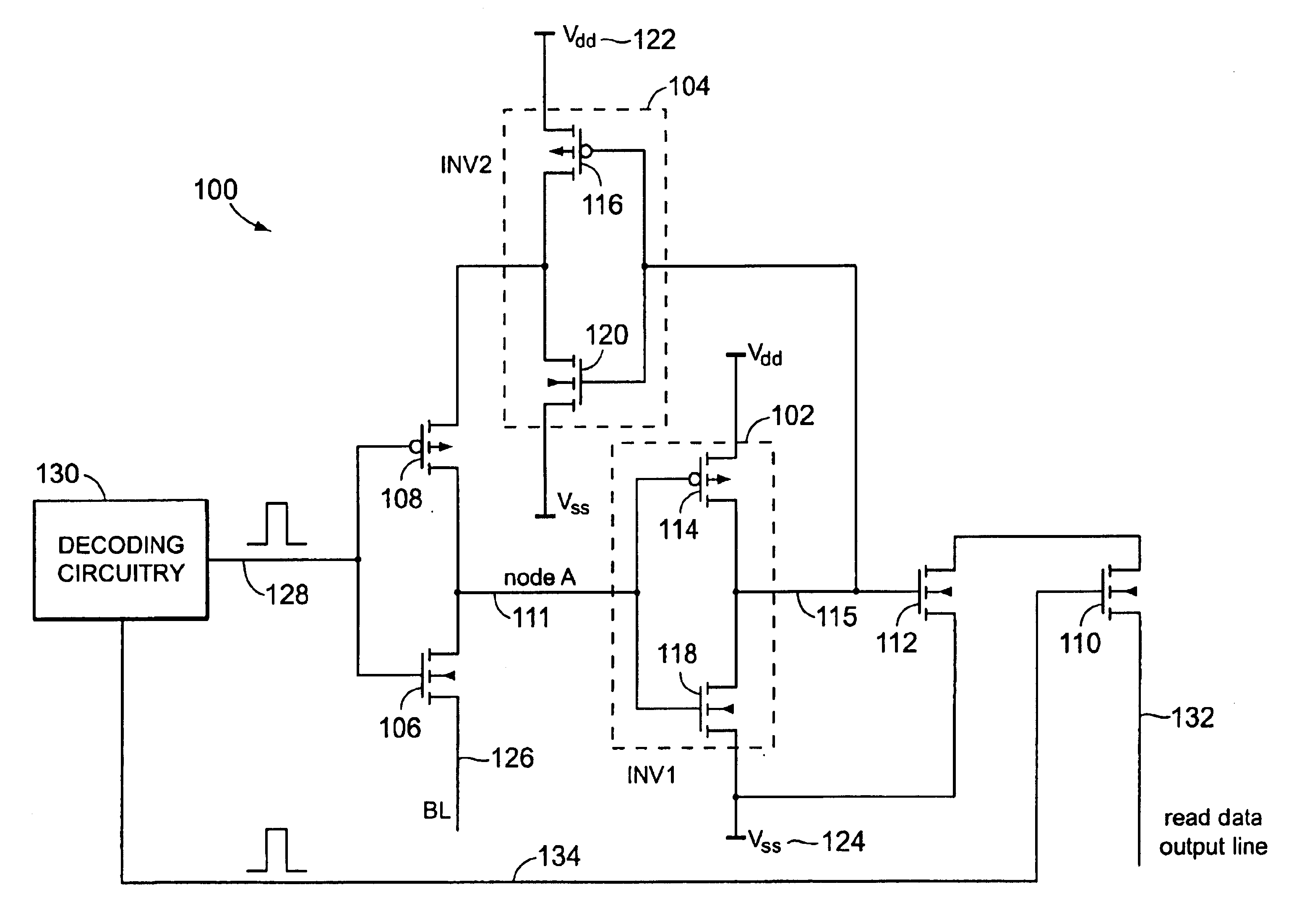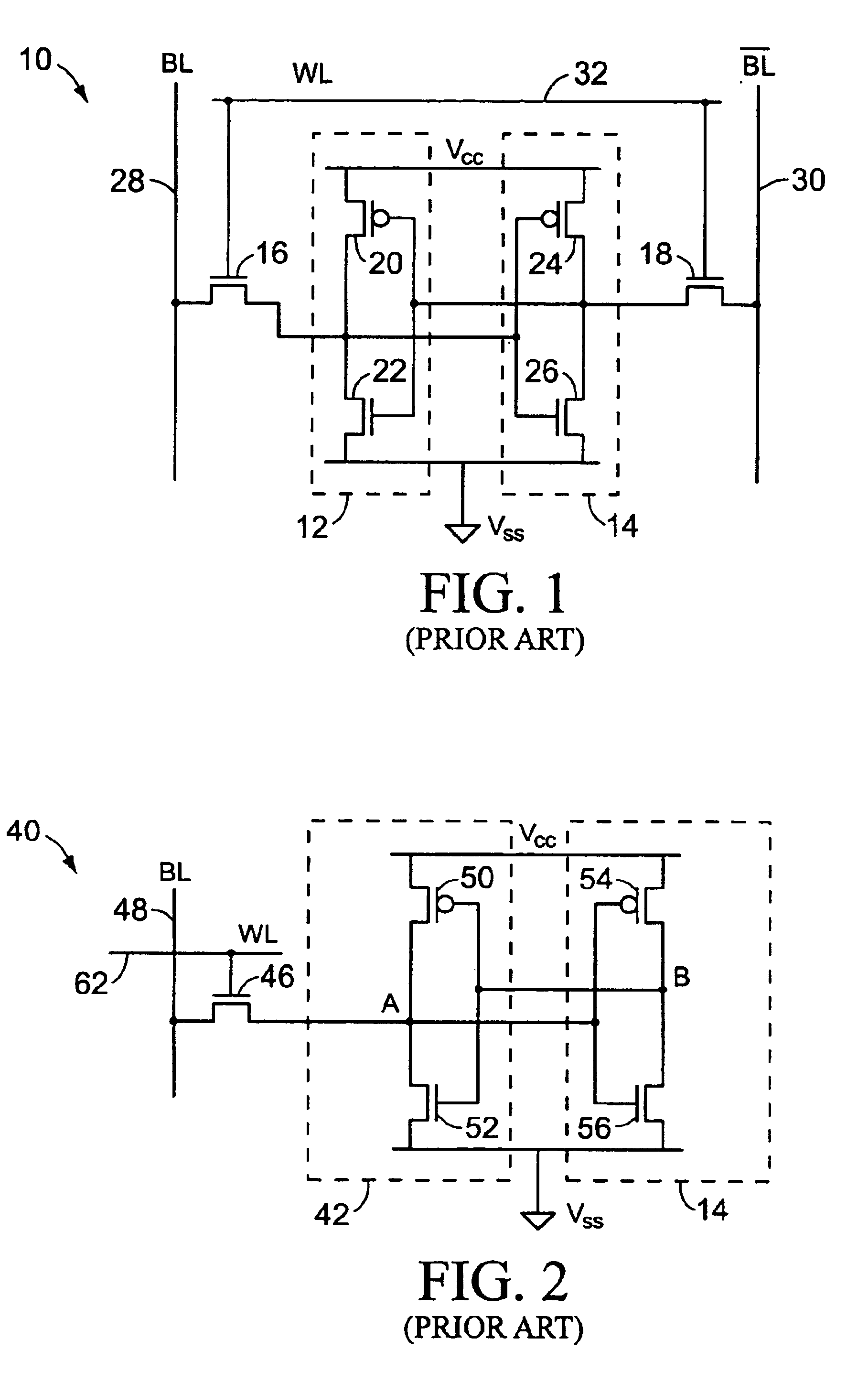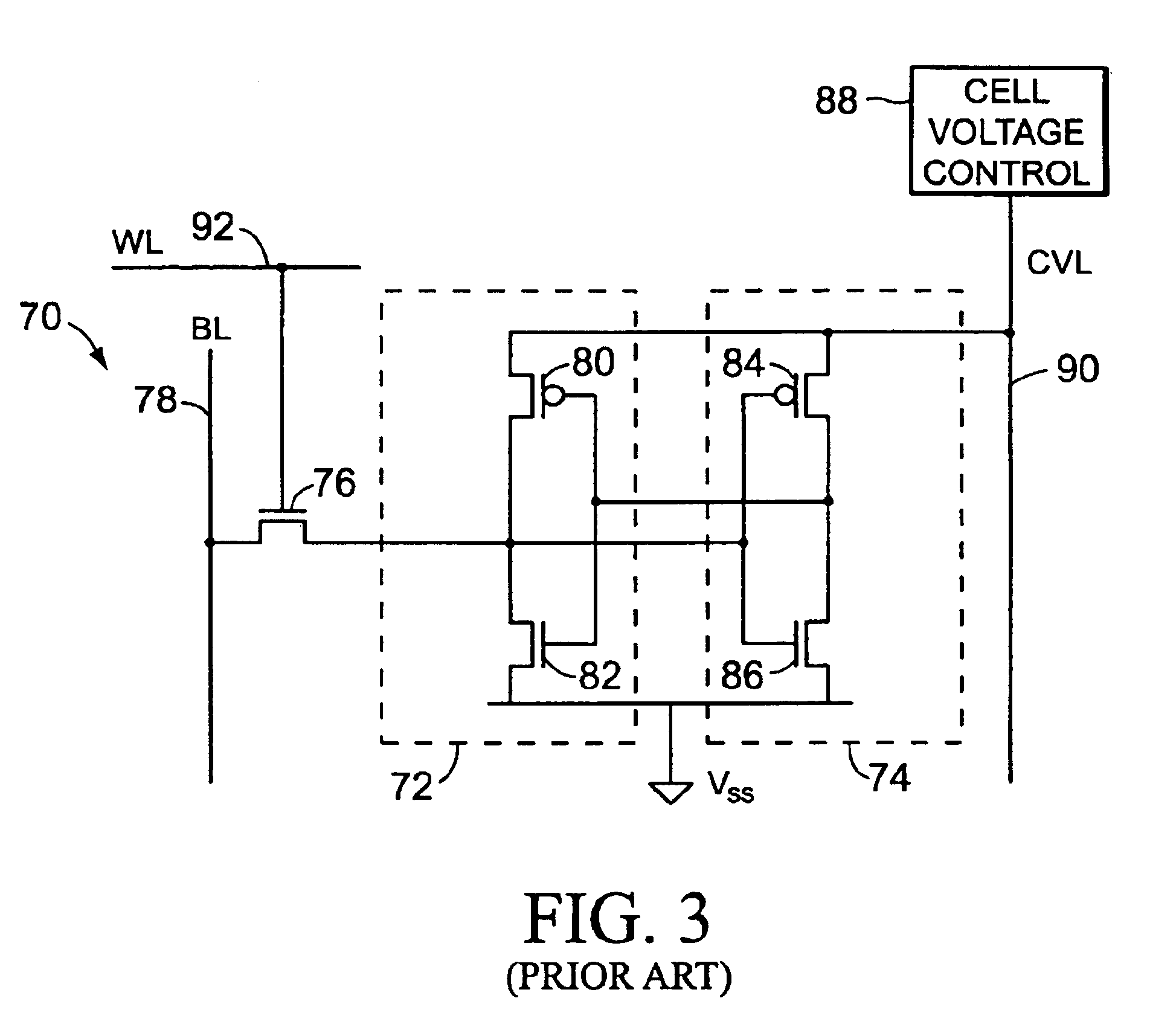Pulse driven single bit line SRAM cell
a single bit line, sram cell technology, applied in the direction of information storage, static storage, digital storage, etc., can solve the problems of large arrays with difficult to meet timing constraints on word line and bit line, cell control voltage, etc., to reduce supply current and circuit noise, and reduce the physical space occupied by the memory cell
- Summary
- Abstract
- Description
- Claims
- Application Information
AI Technical Summary
Benefits of technology
Problems solved by technology
Method used
Image
Examples
Embodiment Construction
FIG. 4 shows a single bit line, pulse driven, static memory cell 100, in accordance with one embodiment of the present invention. The memory cell includes two inverters 102, 104, a write access transistor 106, a feedback-control transistor 108, a read-access transistor 110 and a read buffer transistor 112.
The two inverters 102, 104 each include a p-channel pull-up transistor 114, 116 and an n-channel pull-down transistor 118, 120 (with the respective gates and drains of the pull-up and pull-down transistors each tied together). The inverters 102, 104 operate between the positive voltage supply Vdd 122 and a return potential Vss 124. The first inverter 102 has an output 115 connected to the input of the second inverter 104 and the second inverter 104 has an output connected to the input of the first inverter 102 through the channel of the feedback-control transistor 108. Thus, the inverters 102, 104 are only cross-coupled when the feedback-control transistor 108 has a conductive chan...
PUM
 Login to View More
Login to View More Abstract
Description
Claims
Application Information
 Login to View More
Login to View More - R&D
- Intellectual Property
- Life Sciences
- Materials
- Tech Scout
- Unparalleled Data Quality
- Higher Quality Content
- 60% Fewer Hallucinations
Browse by: Latest US Patents, China's latest patents, Technical Efficacy Thesaurus, Application Domain, Technology Topic, Popular Technical Reports.
© 2025 PatSnap. All rights reserved.Legal|Privacy policy|Modern Slavery Act Transparency Statement|Sitemap|About US| Contact US: help@patsnap.com



